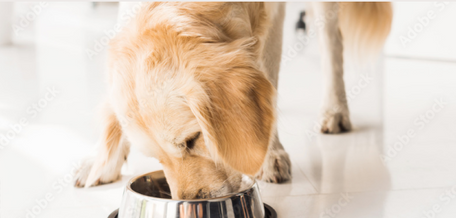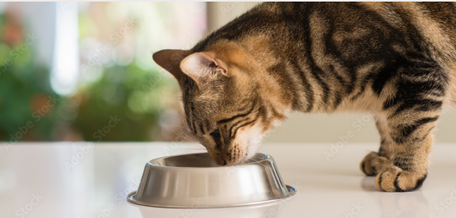A Veterinarian’s Case for Raw: Unlocking Your Pet’s Natural Vitality
In a recent video we interviewed Dr. Jim Higgins, a seasoned veterinarian with 47 years of experience and a graduate of the University of Pennsylvania, as he shared his journey into raw feeding. Initially skeptical, Dr. Higgins was convinced by the amazing health improvements in his own dogs, sparking a passion for advocating raw diets for pets.
Dr. Higgins has been a BJ's Raw Pet Food customer for years!
👇Below, we dive into his insights on how raw feeding can revolutionize your pet’s health.

From Skeptic to Advocate: Dr. Higgins’ Raw Feeding Journey
Dr. Higgins began his career believing raw food was unsafe for pets due to bacterial concerns, a view shaped by his veterinary training in the 1970s. However, his wife’s decision to feed their dogs a raw diet changed everything.
“I couldn’t argue with the results,” he says. “Their coats were shinier, their teeth were cleaner, and their overall health was just better.”
Even their diabetic dog, who transitioned to raw, showed no issues and improved significantly.
This personal experience led Dr. Higgins to question the conventional reliance on kibble and embrace raw feeding as the better and healthier option for dogs and cats.
The Problems with Kibble-Fed Pets
With his 47 years of experience as a Vet, Dr. Higgins has frequently seen health issues in kibble-fed pets, including:
-
Skin Problems: Itchy skin, hot spots, and chronic ear infections.
-
Gastrointestinal Issues: Vomiting, diarrhea, and other digestive upsets.
-
Dental Problems: Tartar buildup, gum disease, and bad breath.
From his own experience, he notes that raw-fed pets exhibit fewer of these issues, thanks to a diet aligned with their biological needs.
“Raw food is what dogs and cats are designed to eat—meat, bones, organs—not processed grains and fillers,” he explains.
Why Raw Feeding Works!
Kibble is essentially fast food for pets. Raw diets, on the other hand, provide a complete nutritional profile—protein, fats, vitamins, and minerals—without the junk found in kibble! Additives, preservatives, and byproducts. The benefits Dr. Higgins has seen first-hand as a vet in raw-fed pets include:
-
Shinier, healthier coats
-
Cleaner teeth and better oral health
-
Improved digestion and fewer GI issues
-
Overall enhanced well-being
Dr. Higgins emphasizes that raw feeding can even reduce long-term veterinary costs by preventing chronic health problems.

The Importance of Proper Sourcing
Not all raw food is equal, and Dr. Higgins stresses the need for proper sourcing and handling to ensure safety. “You want to know where the meat’s coming from, how it’s handled, and how it’s processed,” he advises. He praises smaller companies like BJ’s Raw Pet Food for their transparency and careful handling, which minimizes bacterial risks while delivering high-quality ingredients.
Transitioning to Raw: Simple and Flexible
Transitioning to a raw diet is often easier than pet owners expect. While Dr. Higgins recommends a gradual shift—mixing raw food with kibble over one to two weeks—he notes that some pets, like his diabetic dog, can switch abruptly with no issues. The key is to monitor your pet’s response, adjusting the pace if needed to avoid digestive upset.
Cost-Effective in the Long Run
While raw food may seem pricier than kibble initially, Dr. Higgins argues it’s a worthwhile investment. “Raw-fed pets have fewer health problems, which means fewer vet bills,” he says. Issues like chronic ear infections, dental cleanings, and allergy treatments often decrease, and buying in bulk can further reduce costs.
Is Raw Feeding the Future?
Dr. Higgins firmly believes raw feeding is the future of pet nutrition. “As more pet owners see the benefits—healthier coats, better digestion, fewer vet visits—kibble’s going to become a thing of the past,” he predicts. He compares raw food to a home-cooked meal, far superior to the “microwave dinner” equivalent of kibble.
Getting Started with BJ’s Raw Pet Food
For pet owners curious about raw feeding, Dr. Higgins recommends starting with a reputable supplier like BJ’s Raw Pet Food. “Do your research, but don’t overthink it,” he advises. He suggests consulting a veterinarian open to raw feeding and observing your pet’s response to the diet. BJ’s transparency in sourcing and commitment to quality make it a trusted choice for pet owners looking to make the switch.
Check out our Intro Package, a great way to get started with raw feeding!
Dr. Higgins’ journey from believing raw feeding was unsafe to now being an advocate points to the transformative power of raw pet food. With benefits like improved health, fewer vet visits, and a diet that aligns with pets’ natural needs, it’s no wonder he’s convinced raw is the way to go.




















